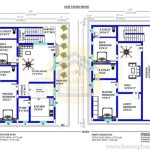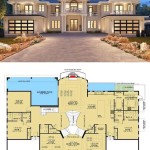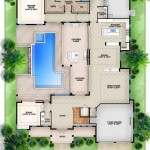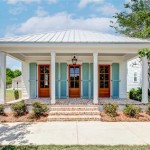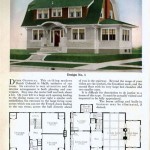Sloped lot house plans are architectural blueprints specifically designed for building houses on terrains with varying elevations. These plans consider the unique challenges and opportunities presented by sloping landscapes, ensuring the structural integrity, aesthetic appeal, and functionality of the home.
For instance, a hillside home may incorporate elevated foundations, split-level floor plans, and terraces to accommodate the terrain. By embracing the natural slope, these designs create visually striking and practical living spaces that maximize views and optimize terrain usage.
In this article, we will delve into the intricacies of sloped lot house plans, exploring their advantages, design considerations, and the diverse architectural styles that can be employed to harmonize with these unique landscapes.
Sloped lot house plans offer a range of benefits and considerations:
- Unique architectural designs
- Enhanced views and natural light
- Improved drainage and water management
- Terraced outdoor spaces
- Potential for lower construction costs
- Challenging terrain to navigate
- Special foundation requirements
- Complex drainage systems
Understanding these factors is crucial when designing and constructing homes on sloped lots.
Unique architectural designs
Sloped lot house plans offer a wealth of opportunities for distinctive architectural designs that harmonize with the natural terrain. These homes often feature:
- Elevated foundations: Raising the house on piers or columns allows for better views, improved drainage, and the creation of usable space beneath the home, such as garages, workshops, or additional living areas.
- Split-level floor plans: Dividing the house into different levels that follow the slope of the land creates interesting and functional living spaces. This design can provide separation between public and private areas, maximize natural light, and offer panoramic views from multiple levels.
- Terraces and balconies: Sloped lots often lend themselves well to the incorporation of outdoor terraces and balconies. These features extend the living space outdoors, providing areas for relaxation, dining, and taking in the surrounding views.
- Curved and angular lines: The sloping terrain can inspire architects to create homes with unique and visually striking curved or angular lines that complement the natural contours of the land.
The possibilities for unique architectural designs on sloped lots are endless, limited only by the creativity of the architect and the desires of the homeowner.
Enhanced views and natural light
Sloped lot house plans offer exceptional opportunities to maximize views and natural light. By strategically positioning the home on the lot and incorporating large windows and glass doors, homeowners can:
- Capture panoramic vistas: Sloped lots often provide elevated vantage points, allowing homes to capture breathtaking views of the surrounding landscape, mountains, water bodies, or city skylines.
- Maximize sunlight exposure: The orientation of the home on a sloped lot can be carefully planned to maximize sunlight exposure throughout the day. This not only reduces the need for artificial lighting but also creates warm and inviting living spaces.
- Create bright and airy interiors: Large windows and glass doors allow natural light to flood into the home, creating bright and airy interiors that enhance the sense of space and well-being.
- Connect indoor and outdoor spaces: Sloped lot homes often feature seamless transitions between indoor and outdoor living areas. Large windows and doors open up to terraces, balconies, and gardens, blurring the boundaries between the interior and exterior.
By harnessing the natural advantages of a sloped lot, homeowners can create homes that are not only visually stunning but also filled with natural light and breathtaking views.
Improved drainage and water management
Sloped lot house plans prioritize efficient drainage and water management to prevent water damage and maintain the integrity of the home. Key considerations include:
- Grading and landscaping: The land around the home is carefully graded to direct water away from the foundation. Landscaping features such as swales, berms, and rain gardens can be incorporated to capture and redirect rainwater.
- Gutters and downspouts: Effective gutter systems are essential to collect and channel rainwater away from the roof and foundation. Downspouts should be extended to discharge water well away from the home.
- French drains: Subsurface drainage systems, such as French drains, can be installed to collect and redirect groundwater and surface water away from the foundation, preventing seepage and moisture problems.
- Foundation drainage: Proper drainage around the foundation is crucial. Weeping tiles or perforated pipes can be installed around the foundation to collect and drain excess water, preventing moisture penetration and potential damage.
By implementing these measures, sloped lot house plans ensure efficient water management, protecting the home from water damage and maintaining its structural integrity.
Terraced outdoor spaces
Sloped lot house plans often incorporate terraced outdoor spaces to maximize the usability and enjoyment of the sloping terrain. Terraces are level platforms constructed into the slope, creating outdoor living areas that seamlessly transition from one level to another.
Terraces offer a range of benefits: they extend the living space outdoors, providing areas for relaxation, dining, and entertaining. They also create opportunities for landscaping and gardening, adding aesthetic appeal and enhancing the connection between the home and its surroundings.
The design of terraced outdoor spaces should carefully consider the slope of the land and the orientation of the home. Terraces can be designed to capture panoramic views, provide privacy from neighboring properties, or create microclimates for specific plants and activities.
Materials used for terraced outdoor spaces vary depending on the desired aesthetic and budget. Common materials include wood, stone, concrete, and composite decking. Proper drainage and retaining walls are essential to ensure the stability and longevity of terraced outdoor spaces on sloped lots.
Well-designed terraced outdoor spaces transform sloped lots into homes that embrace the natural terrain, offering homeowners unique and enjoyable outdoor living experiences.
Potential for lower construction costs
Sloped lot house plans can offer the potential for lower construction costs compared to building on flat lots. This is due to several factors:
- Reduced excavation costs: Sloping lots may require less excavation work to prepare the building site, as the natural slope can be utilized to create level areas for the foundation and other structures.
- Fewer retaining walls: The natural slope of the land can sometimes eliminate the need for extensive retaining walls, which can be costly to construct.
- Smaller foundation size: On a sloped lot, the foundation can often be smaller than on a flat lot, as the natural slope provides support for the structure.
- Efficient use of space: Sloped lot house plans can be designed to make efficient use of the available space, reducing the overall square footage of the home and potentially lowering construction costs.
It’s important to note that the cost savings associated with sloped lot house plans can vary depending on the specific characteristics of the lot and the design of the home. Factors such as the steepness of the slope, soil conditions, and the presence of trees or other obstacles can impact the construction costs.
Challenging terrain to navigate
Building on a sloped lot presents unique challenges related to navigating the terrain during construction and throughout the life of the home. The steepness of the slope, soil conditions, and presence of obstacles such as trees and rocks can make it difficult to access the site, transport materials, and build the home safely and efficiently.
During construction, heavy equipment may be required to access the site and prepare the land for building. Steep slopes can make it challenging to operate machinery safely and may require specialized equipment or techniques. Additionally, transporting materials and equipment up and down the slope can be time-consuming and may require specialized vehicles or manual labor.
Once the home is built, navigating the terrain can be challenging for residents and visitors. Steep driveways and walkways may require special features such as switchbacks, retaining walls, or steps to ensure safe access. In areas with heavy snowfall or rainfall, these features can become slippery and hazardous, requiring additional maintenance and precautions.
Landscaping and maintaining a sloped lot can also be challenging. Mowing lawns, planting trees, and performing other maintenance tasks can be difficult on steep slopes and may require specialized equipment or professional assistance. Additionally, erosion control measures may be necessary to prevent soil erosion and protect the integrity of the slope.
Despite these challenges, sloped lot house plans can be successfully implemented with careful planning, engineering, and construction practices. By addressing the unique characteristics of the terrain, architects and builders can create homes that are both functional and visually appealing, harmonizing with the natural contours of the land.
Special foundation requirements
Sloped lot house plans often require special foundation designs to ensure the stability and structural integrity of the home on the uneven terrain. These specialized foundations address the unique challenges posed by sloping landscapes and provide a solid base for the structure.
- Stepped footings: Stepped footings are a common foundation type for sloped lots. They consist of a series of concrete steps that follow the contour of the land, providing a level surface for the home to rest upon. Stepped footings distribute the weight of the structure evenly across the slope, preventing settling and ensuring stability.
- Pier and beam foundations: Pier and beam foundations are another option for sloped lots. They consist of concrete piers that are driven into the ground and support a network of beams. The beams create a level platform for the home, allowing it to be elevated above the slope. Pier and beam foundations are particularly well-suited for steep slopes or areas with unstable soil conditions.
- Caisson foundations: Caisson foundations are deep foundations that are used in areas with very soft or unstable soil conditions. They consist of large concrete cylinders that are sunk into the ground and filled with concrete. Caisson foundations provide a solid and stable base for the home, even on challenging slopes.
- Grade beams: Grade beams are reinforced concrete beams that are placed around the perimeter of the foundation. They help to distribute the weight of the structure and prevent the foundation from shifting or cracking due to the uneven terrain.
The choice of foundation type for a sloped lot house plan depends on various factors, including the steepness of the slope, soil conditions, and the size and weight of the home. A qualified structural engineer should be consulted to determine the most appropriate foundation design for the specific site and building requirements.
Complex drainage systems
Sloped lot house plans require complex drainage systems to effectively manage water runoff and prevent erosion and water damage. These systems are designed to collect, channel, and discharge water away from the home and the surrounding landscape.
- Gutters and downspouts: Gutters and downspouts are essential components of any drainage system. They collect rainwater from the roof and direct it away from the foundation of the home. On sloped lots, gutters should be carefully designed to handle the increased water flow and prevent overflow. Downspouts should be extended to discharge water well away from the home and into appropriate drainage channels or dry wells.
- French drains: French drains are subsurface drainage systems that collect and redirect groundwater and surface water away from the foundation. They consist of a perforated pipe surrounded by gravel or crushed stone, which is then wrapped in a filter fabric. French drains are installed along the perimeter of the foundation or in areas where water tends to accumulate. They collect water and discharge it into a drainage ditch or dry well.
- Catch basins: Catch basins are underground chambers that collect and store stormwater runoff. They are often used in conjunction with French drains to capture and filter water before it enters the drainage system. Catch basins can also be equipped with overflow pipes to prevent flooding during heavy rainfall events.
- Dry wells: Dry wells are underground chambers filled with gravel or crushed stone that allow water to infiltrate into the ground. They are used to collect and store stormwater runoff, reducing the amount of water that flows into the drainage system. Dry wells are particularly useful on sloped lots where there is limited space for surface drainage.
Properly designed and installed drainage systems are crucial for the longevity and structural integrity of sloped lot homes. By effectively managing water runoff, these systems prevent water damage to the foundation, erosion of the landscape, and the buildup of standing water that can attract pests and insects.










Related Posts


